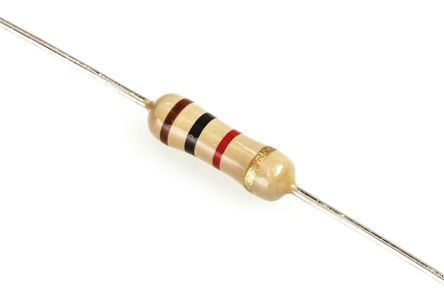R Circuit
Claimed by Matthew Munns - Fall 2017
Resistors may exist in a circuit and resist electric charge. The resistance of a resistor depends on the properties of the material and the area of the resistor. These two attributes will be investigated later in the page.
Resistors may be ohmic or non-ohmic. An ohmic resistor has a conductivity that is nearly constant, while a non-ohmic resistor will vary depending on the conditions. This page will focus on ohmic resistors in a complex circuit.
The following is an image of an ohmic resistor like the resistor used in lab:

Mathematics
As discussed above, resistance of a material is dependent on two factors: the properties of the material, and the area of the resistor.
From the above factors, we get the following definition of resistance: [math]\displaystyle{ R = \frac{L}{σ A} }[/math]
In this definition [math]\displaystyle{ L }[/math] is the length of the resistor, [math]\displaystyle{ A }[/math] is the cross-sectional area of the resistor, and [math]\displaystyle{ σ }[/math] is the conductivity of the material. [math]\displaystyle{ σ }[/math] can be further broken down to show [math]\displaystyle{ σ = |q|nu }[/math].
In A Circuit
There is a change in potential energy across a resistor, which is useful when evaluating the loop rule in a circuit with resistors. The change in potential across a resistor is [math]\displaystyle{ I = \frac{ΔV}{R} }[/math] Knowing this equation allows one to solve for [math]\displaystyle{ ΔV }[/math] if given [math]\displaystyle{ I }[/math] and either [math]\displaystyle{ R }[/math] or the components of [math]\displaystyle{ R }[/math] enumerated above.